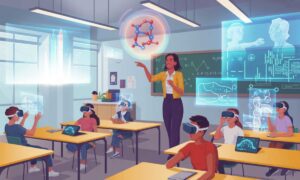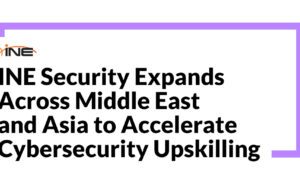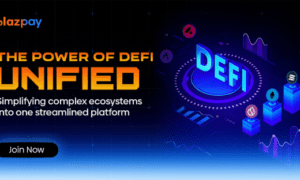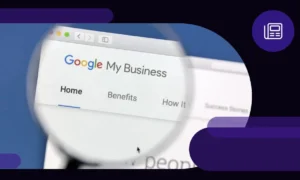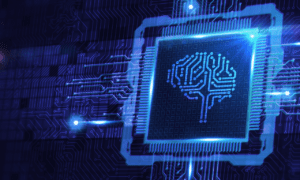Imagine sitting in a classroom where the textbook updates itself based on your learning style, the teacher’s assistant never tires, and your assignments change according to your progress, all without asking. This is not a distant vision; this is already happening. Technology has reached every part of your daily life. Even something as specific as researching Asian women for marriage can be enhanced by AI tools that personalize content, suggest trusted platforms, and remove irrelevant distractions. The same intelligence that streamlines search experiences now transforms education.
AI in education isn’t just about tutoring or helping you solve math problems. It’s reshaping how content is delivered, how teachers teach, and how students learn. Here’s how artificial intelligence goes far beyond the digital tutor.
Smart Content Beyond Digital Textbooks
AI-generated content takes educational material to a new level. This isn’t about converting textbooks into PDFs. It’s about transforming complex concepts into digestible, tailored, and interactive learning experiences. You no longer have to adapt to the textbook — the textbook adapts to you.
For example, AI can break down large blocks of academic information into summaries, flashcards, quizzes, or even gamified lessons. Students who grasp visual content better might get diagrams, while others receive text explanations. AI tools like Content Technologies Inc. and ScribeSense build smart learning materials that match your pace and style.
Smart content also includes real-time updates. When new information becomes available, AI can integrate it seamlessly into your materials without waiting for the next edition of a textbook. This is especially valuable in fast-evolving fields like technology, medicine, or environmental science, where staying up-to-date is crucial.
Adaptive Learning Systems and Personalized Curriculum
AI-powered adaptive learning platforms analyze your interactions, such as how you answer questions and the time spent on them, to customize the learning experience in real-time. This approach personalizes each session, which makes the material more relevant and effective.
Instant Adjustments Based on Performance
Adaptive learning systems instantly adjust based on your performance. If you grasp a concept quickly, the system moves you forward and skips repetition. If you struggle, it slows down and provides additional practice or alternative explanations until you master the topic. This ensures a paced and focused learning journey.
Real-World Examples of Adaptive Learning Platforms
Platforms like DreamBox, Knewton, and Century Tech are already transforming classrooms by implementing adaptive learning technology. These tools provide students with personalized experiences similar to one-on-one tutoring, even in large group settings. By adapting to individual needs, these platforms help maximize learning outcomes and support diverse learning styles.
Feedback Loops: Real-Time Correction and Insight
Traditional learning often involves a gap between making a mistake and getting feedback. AI closes that gap. Real-time feedback has become one of the most useful applications of AI in education, particularly in subjects like writing, math, and language learning.
For example, if you’re writing an essay, AI can analyze sentence structure, grammar, tone, and logic instantly. Tools like Grammarly and Quillbot suggest corrections as you write. In mathematics, apps like Photomath allow students to scan handwritten problems and receive step-by-step solutions with explanations.
These systems don’t just correct mistakes — they help you understand why something is wrong. This builds deeper knowledge rather than shallow memorization. Instead of waiting days for a teacher to return an assignment, you get instant insights and opportunities to improve immediately.
AI in STEM Labs: Virtual Experiments and Simulation
Science education often depends on lab access and expensive equipment. Artificial intelligence removes these limitations by providing simulations that are as effective — and often safer — than real-life experiments.
Interactive, Risk-Free Exploration
Students can simulate chemistry reactions, test engineering designs, or explore biology experiments in 3D environments. With virtual labs, mistakes are harmless, which allows for trial and error without fear of damage or danger. This fosters a deeper understanding of scientific principles while making learning fun and stress-free.
Equal Access to STEM Resources
AI-driven platforms like Labster and PhET are transforming STEM education by providing equal access to high-quality lab experiences, regardless of location or funding. They allow students in remote or underfunded schools to participate in virtual experiments and learn crucial STEM skills.
AI as a Teacher’s Assistant, Not a Replacement
Smart technology doesn’t replace teachers — it empowers them by reducing administrative tasks, which allows more time for direct student interaction. AI handles grading, attendance, scheduling, and answering common questions. This gives educators time to focus on mentorship, creativity, and emotional support.
Platforms like TeachFX help teachers analyze classroom conversations to understand engagement and dialogue balance. AI also supports lesson planning, adapts materials for special needs, and tracks academic trends. For teachers with large groups, these tools improve organization and efficiency, which enables them to focus on what matters most — student growth.
Language Learning & Inclusivity: Breaking Global Barriers
Language learning has never been more accessible. Artificial intelligence enables you to practice pronunciation, vocabulary, and grammar at your own pace and receive feedback instantly.
Smarter Language Tools
Apps like Duolingo and ELSA Speak personalize lessons to match your level. These platforms track your progress and provide instant feedback, which makes each lesson more effective. ELSA Speak, for example, uses AI voice analysis to coach users on pronunciation and helps refine accent and speaking skills. With these tools, you receive tailored exercises that ensure improvement in the areas you need most.
Tools for Diverse Classrooms
Text-to-speech, real-time captioning, and translation tools make content understandable for students who speak different languages or need accessibility support. Tools like Texthelp and Google Read Along bring inclusivity to both physical and digital classrooms.
AI-Powered Tools for Spotting At-Risk Students Early
AI doesn’t just react — it can anticipate. Through predictive analytics, educational platforms analyze data to identify patterns that signal risk, such as declining grades, missed assignments, or low engagement.
By spotting these signs early, teachers and counselors can intervene before students fall too far behind. This approach shifts education from reactive problem-solving to proactive support.
In higher education, AI tracks performance across courses and compares it with historical data to flag students needing help. Some universities have seen drops in dropout rates after integrating predictive systems that alert staff to intervene at the right time.
Read More From Techbullion



